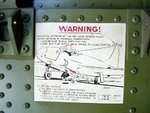Improper aileron adjustment plus a faulty engine is what caused the poor turn performance at wright field buzzard. The high elevator forces are suspect as-well as the 190 featured perhaps some the lightest control forces of any a/c of WW2.
A good example of when the ailerons were properly adjusted are the British tests with a heavy Jabo version, this a/c despite being heavier less aerodynamically clean and running at low power was able to turn just as well the P-51 Mustang Mk.III. This a/c did also, unlike the others with improper aileron adjustment, give the pilot warning of the approaching stall with a slight buffet. (Just like vet Fw-190 pilots note it did)
A good example of when the ailerons were properly adjusted are the British tests with a heavy Jabo version, this a/c despite being heavier less aerodynamically clean and running at low power was able to turn just as well the P-51 Mustang Mk.III. This a/c did also, unlike the others with improper aileron adjustment, give the pilot warning of the approaching stall with a slight buffet. (Just like vet Fw-190 pilots note it did)




